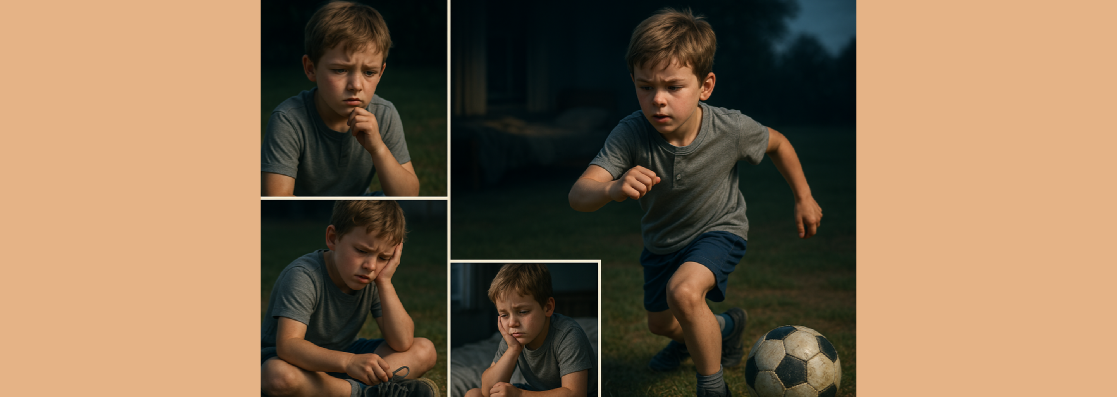
How Does ADHD Affect a Child’s Physical Development?
- April 11, 2025
- 0 Likes
- 5330 Views
- 0 Comments
How Does ADHD Affect a Child’s Physical Development?
ADHD, or Attention-Deficit/Hyperactivity Disorder, is often known for symptoms like inattention, impulsive actions, and being overly active. But many people don’t realize that ADHD can also impact a child’s physical development in several important ways. So, how does ADHD affect a child’s physical development? The answer involves not just behavior but also how the brain and body work together. ADHD can influence how a child moves, grows, sleeps, and even how they view themselves. To understand the full picture, we need to look at how ADHD affects the body as well as the mind.
Physical Development and Motor Coordination
One major way ADHD affects children’s physical development is by interfering with motor skills. Kids with ADHD often have trouble with both fine motor skills, like writing or buttoning clothes, and gross motor skills, like running or jumping. These issues can make tasks like playing sports, cutting with scissors, or tying shoes frustrating. Sometimes, this is seen as clumsiness, but it’s actually a sign of how ADHD affects physical development. So, how can ADHD affect a child’s physical development? It can slow down the progress of physical milestones, reduce the child’s confidence in movement, and lead them to avoid physical activity—especially if they feel embarrassed or discouraged after trying and failing.
Sleep Disturbances and Growth Implications
Sleep is very important for a child’s body to grow and stay healthy. But ADHD often makes it harder for kids to fall asleep, stay asleep, or feel rested in the morning. When children don’t sleep well, it can affect their growth since the body grows most during deep sleep. This is another way ADHD affects physical development. Also, medications used to treat ADHD can sometimes lower appetite, leading to poor nutrition. When this happens, it may result in slow physical growth or lower energy levels, making it harder for the child to stay active during the day.
Impact on Cognitive and Social Development
While we’re focusing on the body, we also need to think about the brain. So, how does ADHD affect a child’s cognitive development? ADHD makes it harder to pay attention, remember things, and follow steps all skills that are important in both school and play. These cognitive difficulties can also affect physical activities. For example, if a child can’t follow directions in a sport, they may stop playing altogether. This shows how closely related cognitive and physical development really are. Children who struggle in one area often find the other affected too.
Behavioral Challenges and Physical Safety
Because ADHD affects impulse control, children with the disorder are more likely to take risks or act without thinking. That can lead to injuries during play or sports. Parents may wonder, does ADHD affect physical development in terms of safety? Yes, it does. Children with ADHD might fall more often, bump into things, or engage in rough play without realizing the danger. These experiences can make them afraid to try new physical activities, which over time can reduce their muscle strength, flexibility, and overall fitness. This cycle can hold back their physical growth.
Emotional Impact and Physical Self-Perception
ADHD also affects how kids feel about themselves. They might get teased for being “too hyper” or clumsy, or be told they aren’t trying hard enough. This can lower their self-esteem and make them shy away from physical tasks. What effect does ADHD have on development? It doesn’t just affect the body—it also affects how children feel about using their bodies. When a child feels unsure or embarrassed, they are less likely to try physical activities that help build strength and confidence. Over time, this emotional impact can limit both physical and social development.
Supporting Healthy Development in Children with ADHD
The good news is that many strategies can help children with ADHD develop better physical skills. Sports that include structure and routine like martial arts, swimming, or gymnastics can help build coordination and focus. Occupational therapy is another great way to work on fine motor skills. Parents should also make sure their child gets healthy food, enough sleep, and plenty of chances to move and play. For some families, exploring natural remedies for ADHD can also be part of a supportive, holistic approach. So, when people ask how does ADHD affect children’s physical development and what can be done to help, the answer lies in a well-rounded approach. By supporting both mind and body, we can help these children grow stronger and more confident.
Final Thoughts
In conclusion, ADHD affects physical development in many ways through sleep problems, motor skill delays, risk of injury, and low self-esteem. Asking how does ADHD affect a child’s physical development is an important step toward understanding the condition better. It’s also helpful to ask how does ADHD affect a child’s cognitive development, since both areas influence each other. With early support, caring adults, and the right tools, children with ADHD can do well both physically and mentally.
